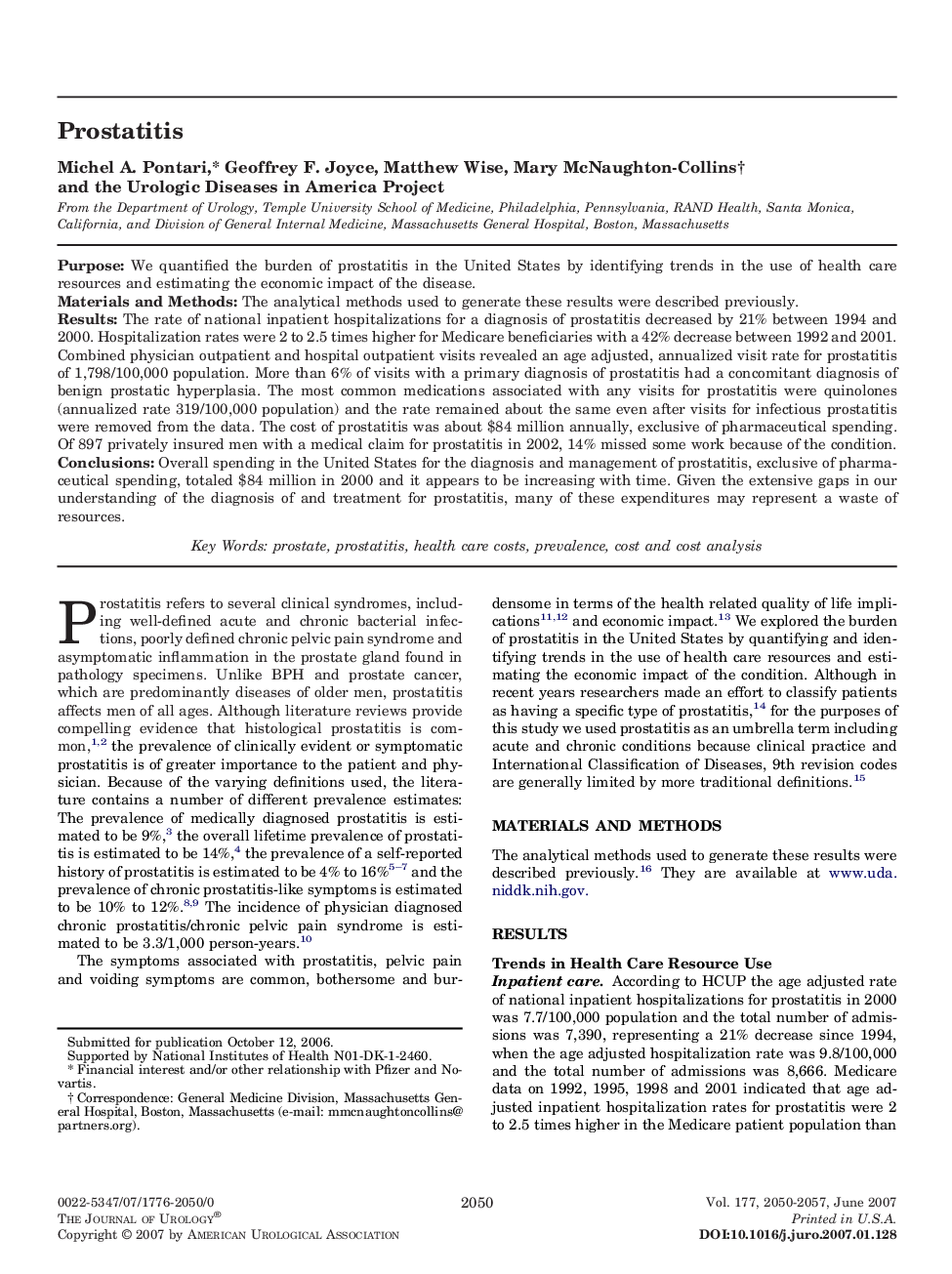| Article ID | Journal | Published Year | Pages | File Type |
|---|---|---|---|---|
| 3879355 | The Journal of Urology | 2007 | 8 Pages |
PurposeWe quantified the burden of prostatitis in the United States by identifying trends in the use of health care resources and estimating the economic impact of the disease.Materials and MethodsThe analytical methods used to generate these results were described previously.ResultsThe rate of national inpatient hospitalizations for a diagnosis of prostatitis decreased by 21% between 1994 and 2000. Hospitalization rates were 2 to 2.5 times higher for Medicare beneficiaries with a 42% decrease between 1992 and 2001. Combined physician outpatient and hospital outpatient visits revealed an age adjusted, annualized visit rate for prostatitis of 1,798/100,000 population. More than 6% of visits with a primary diagnosis of prostatitis had a concomitant diagnosis of benign prostatic hyperplasia. The most common medications associated with any visits for prostatitis were quinolones (annualized rate 319/100,000 population) and the rate remained about the same even after visits for infectious prostatitis were removed from the data. The cost of prostatitis was about $84 million annually, exclusive of pharmaceutical spending. Of 897 privately insured men with a medical claim for prostatitis in 2002, 14% missed some work because of the condition.ConclusionsOverall spending in the United States for the diagnosis and management of prostatitis, exclusive of pharmaceutical spending, totaled $84 million in 2000 and it appears to be increasing with time. Given the extensive gaps in our understanding of the diagnosis of and treatment for prostatitis, many of these expenditures may represent a waste of resources.
